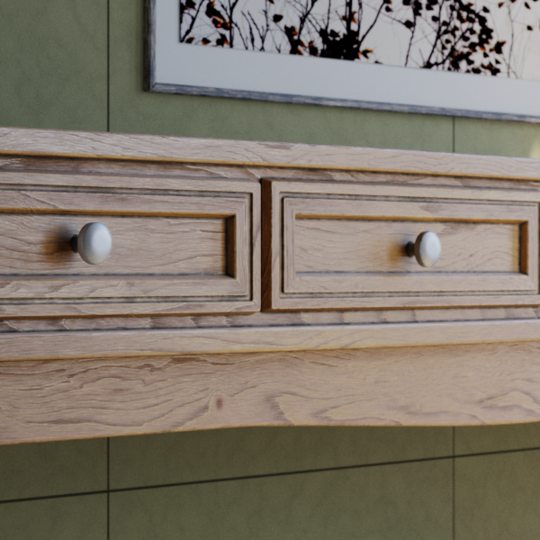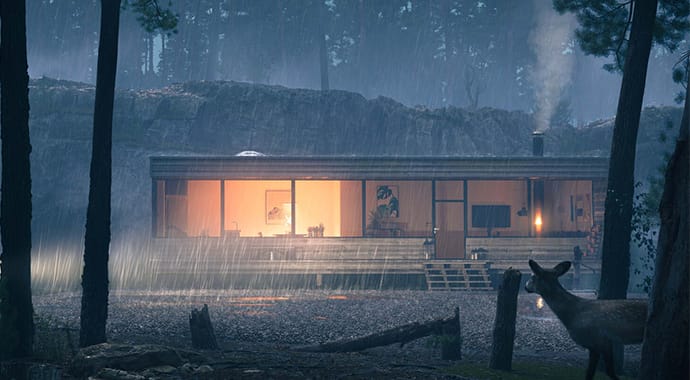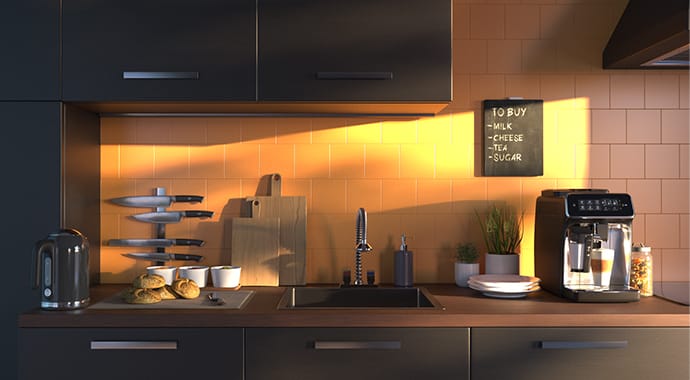Learn how to create wood textures that will accentuate the realism and depth of your archviz designs in V-Ray for 3ds Max.
Wood textures are essential in architectural rendering. They help designers tell stories by adding authenticity and conveying contrasting moods through factors like wear and tear, dust, and dirt, while also creating a visually appealing experience for viewers. By skillfully crafting wood textures, designers can breathe life into their designs, making their architectural spaces more believable and engaging. Need some inspiration? Take a look at our gallery, full of projects rendered by our talented user community.
In this V-Ray for 3ds Max tutorial, we'll show you how to create a realistic wood material that captivates the eye. We'll start by building a base wood material and then add details like scratches and wear. Then, we'll incorporate dirt and dust for added authenticity. Feel free to download the sample scene and follow along with the tutorial video below. Let’s get started!
Creating the based wooden texture for 3ds Max
1. Find an image of real wood on the internet or use a photograph of wood.
- You can browse through various wood textures in Chaos Cosmos and download and import them straight into your scene.
- Ensure you have both a diffuse texture and a normal map of the wood.
2. Connect the normal map to the bump channel and increase its value to 100.
- This will add depth and texture to the wood material.
3. Plug the diffuse texture into the diffuse slot.
- This will provide the color and pattern for the wood material.
4. Use a V-Ray UVW Randomizer node to control the direction of the wood grain.
5. Make color corrections to the wood material if desired.
- Use a color correction node to adjust the gamma and saturation of the wood texture.
- Lowering the gamma will make the texture darker while reducing saturation will make it less vibrant.
6. Enable reflections by turning the reflection color to white.
- Adjust the glossiness value to control the shininess of the material.
- Real wood surfaces have varying glossiness, so consider creating a glossy texture using image editing software.
- Use the existing diffuse map to create the glossy texture.
- Plug the glossiness texture into the reflection glossiness map slot.
- Set the color space type to None to avoid applying gamma to the texture.
7. Verify that the wood grains have different levels of glossiness, creating a more natural and interesting surface.
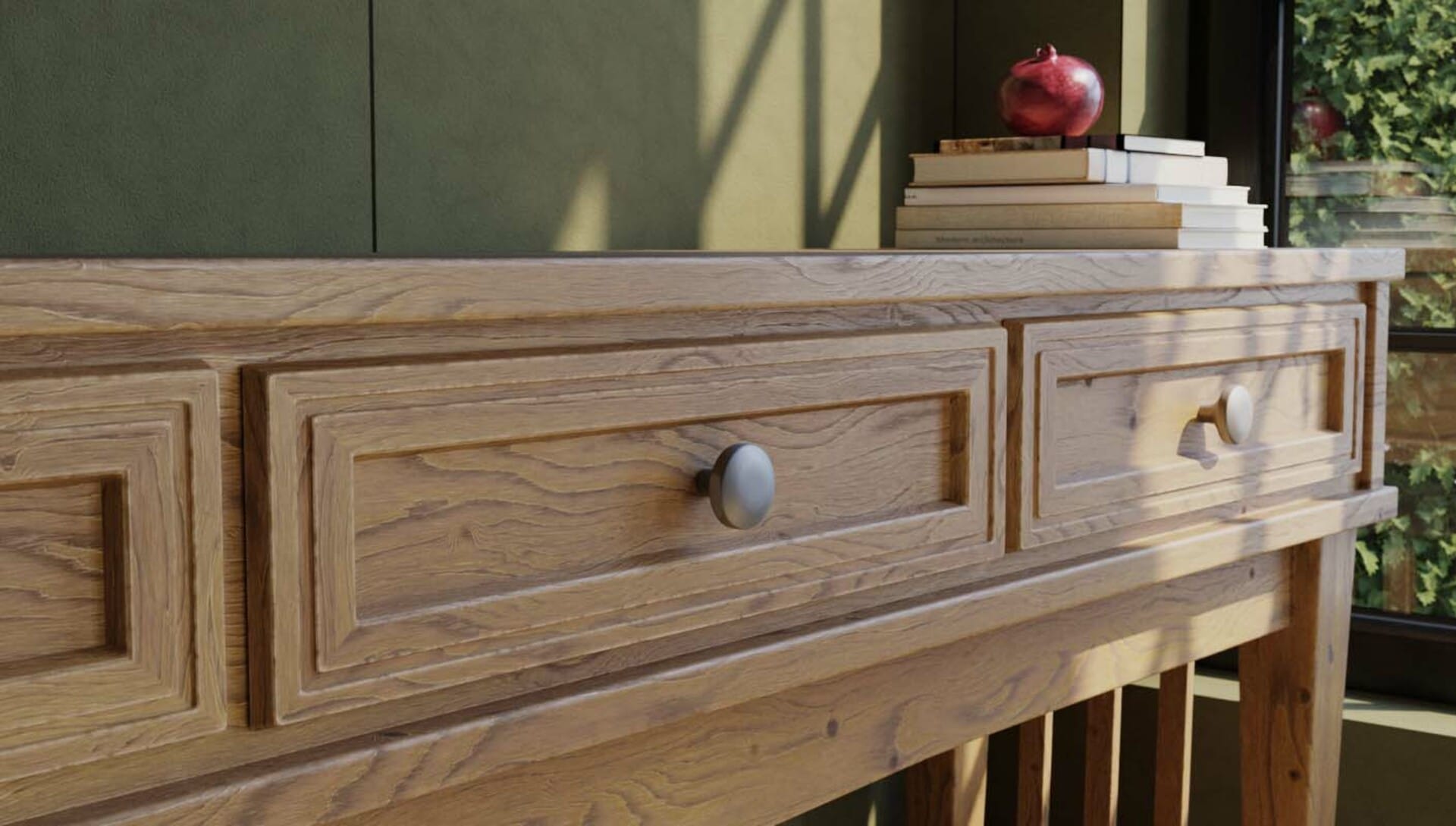
Adding scratches and wear
1. Create another version of the wood material to represent a worn and scratched wood surface.
- By adjusting the tiling of the V-Ray UVW Randomizer, the grain of the wood can be made narrower. However, it's important to keep in mind that this effect is dependent on the texture you are working with. If you use a different texture, changing the tiling may not result in a narrower grain.
- Additionally, to enhance the brightness of the damaged wood, the gamma in the color correction node can be adjusted to your liking.
2. Introduce a texture of scratches to make the surface appear more rough.
- Plug the scratch texture into the bump map slot.
- Adjust the strength and direction of the bump to achieve the desired effect.
- Use a V-Ray randomizer node to change the tiling and scaling of the scratches.
- Lower the reflectivity of the material to enhance the worn appearance.
3. Use VRayBlendMtl to mix the main wood material with the scratched wood material.
- Connect the main wood material to the base material slot of the V-Ray Blend material.
- Temporarily use a dummy material in the coat 1 slot to set up the mask.
4. Create a mask using the V-Ray curvature node to identify the edges of the object.
- Set the mode to convex to capture the edges rather than the crevices.
- Adjust the output maximum color value to make the mask more prominent.
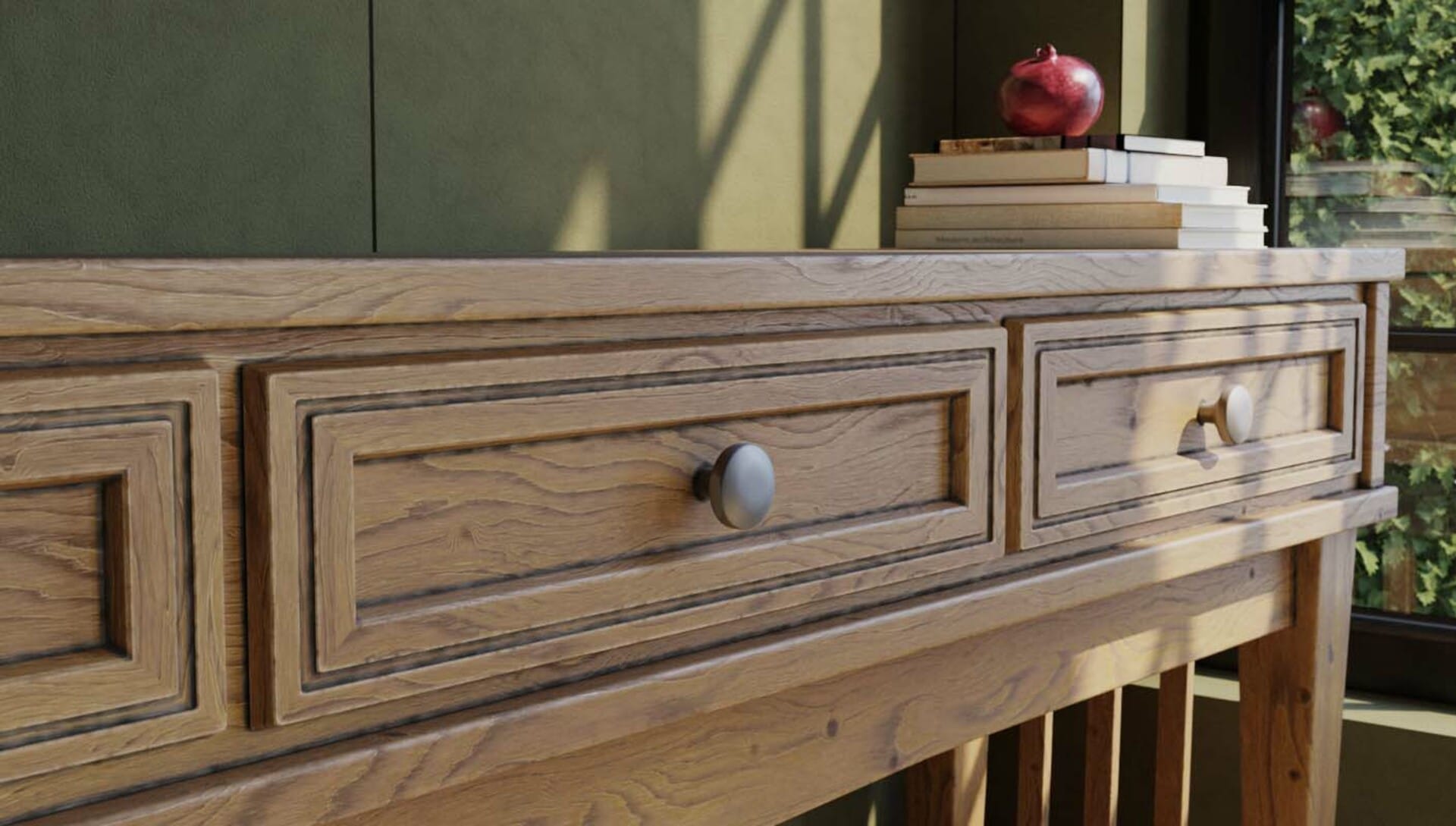
Applying dirt
1. Modify the main wood material to create a dirty appearance.
- Desaturate the diffuse texture and mix it with noise to simulate dirt.
- Use a noise node to add details and adjust the size and contrast of the noise.
- Change the color of the dirt to a dark shade of green.
2. Lower the reflectivity of the material to match the characteristics of dirty surfaces.
3. Set up a mask for the dirt using the V-Ray Dirt node.
- Enable the "consider only the same object" option to exclude the ground from the mask.
- Adjust the occluded color and RGB multiplier to strengthen the mask.
- Fine-tune the distribution and bias parameters to achieve the desired effect.
- Use a texture map to add variation to the mask and adjust the contrast if necessary.
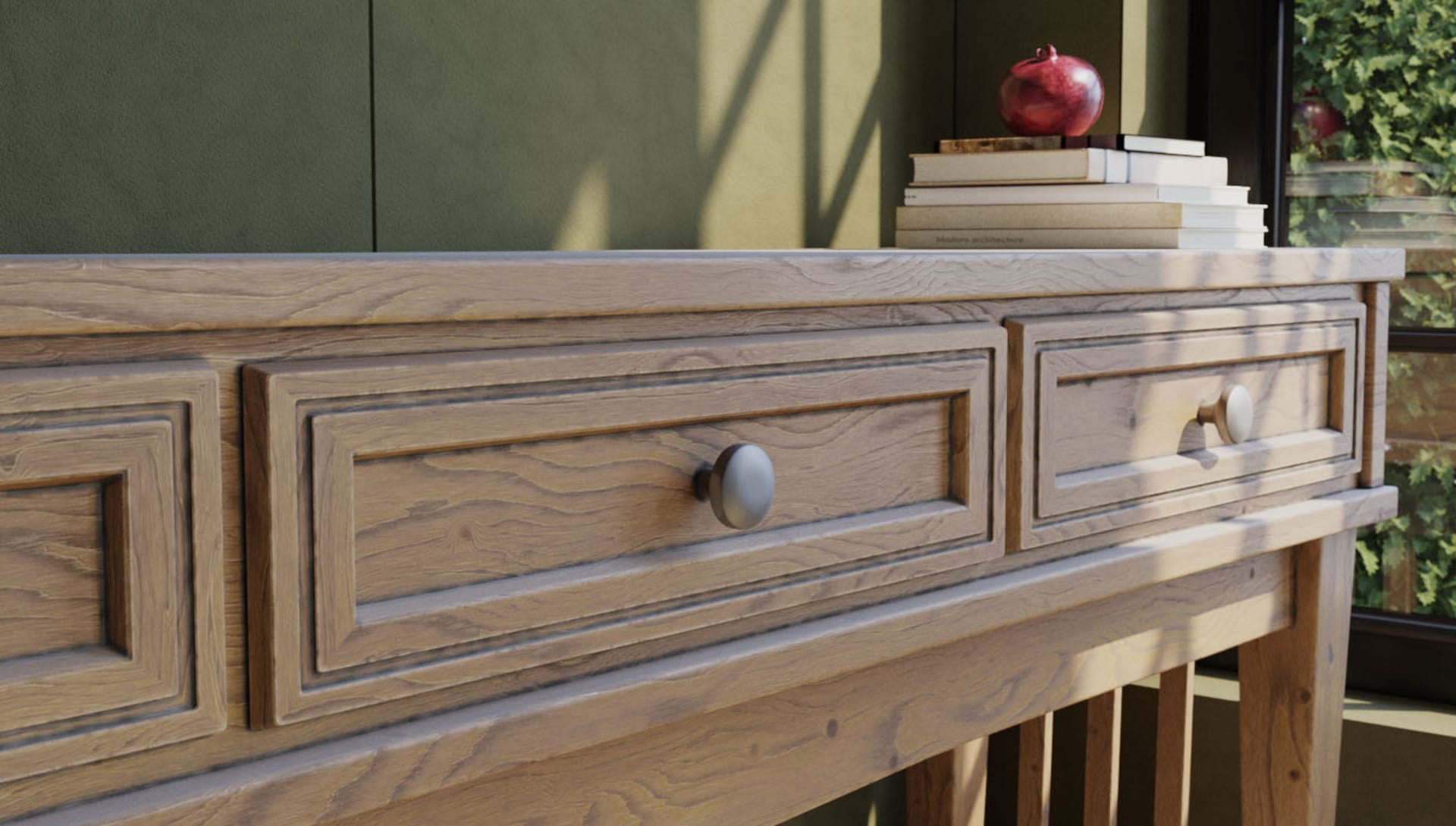
A final sprinkle of dust
- Use a falloff node to create a mask for the top surfaces of the object.
- Set the falloff direction to the world axis and reverse the mask colors.
- Adjust the falloff type and mix curve to control the mask's shape and contrast.
- Change the color of the mask to mid-gray.
2. Lower the reflectivity and add a slight sheen to the material to enhance the dusty appearance.
3. Set up a mask for the dirt using the V-Ray Dirt node.
- Enable the "consider only the same object" option to exclude the ground from the mask.
- Adjust the occluded color and RGB multiplier to strengthen the mask.
- Fine-tune the distribution and bias parameters to achieve the desired effect.
- Use a texture map to add variation to the mask and adjust the contrast if necessary.
Now it's your turn
We hope you found this tutorial helpful! By mastering the techniques outlined, designers can create wood textures that accentuate the realism and depth of their archviz designs and evoke emotions that tell compelling stories. Now it’s time to render yours.

